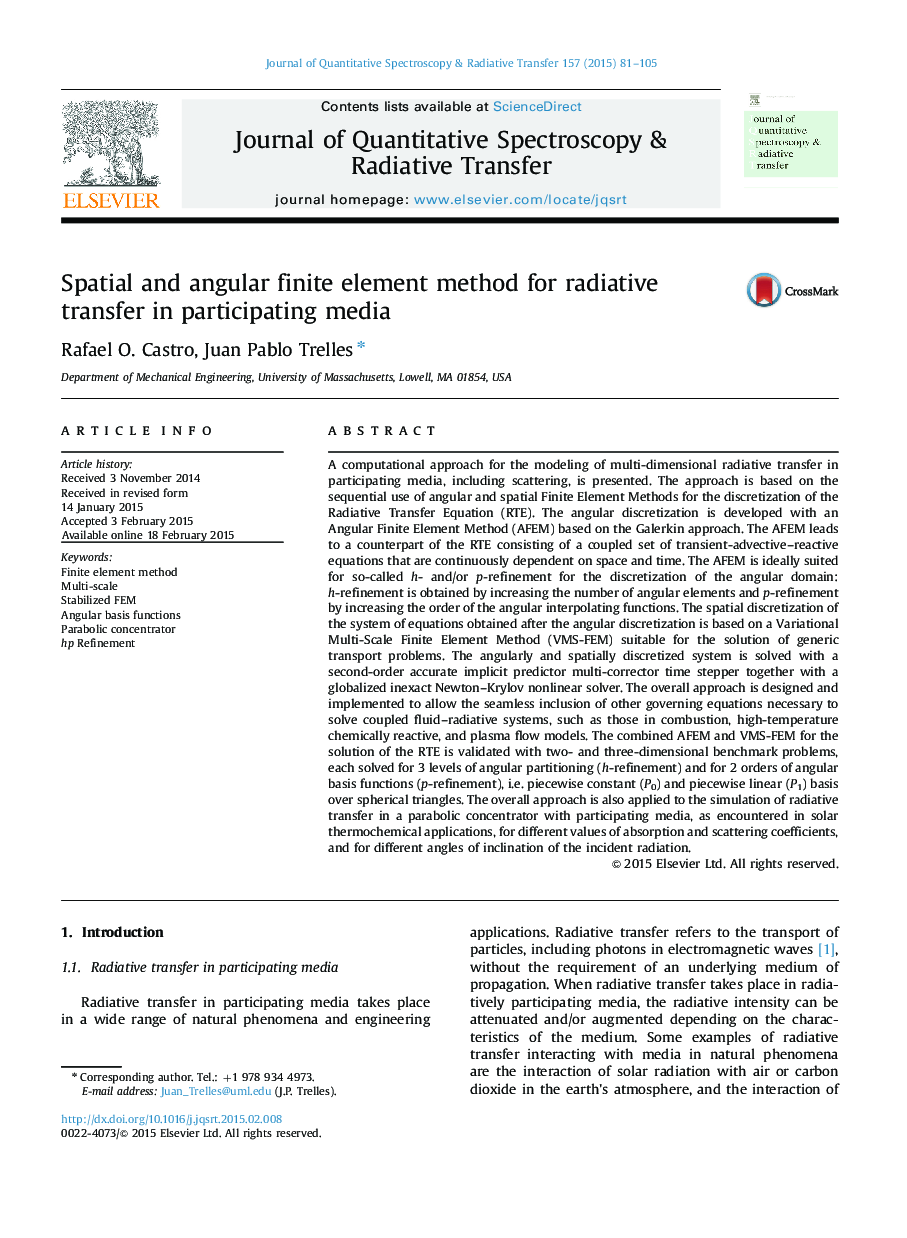| Article ID | Journal | Published Year | Pages | File Type |
|---|---|---|---|---|
| 5428029 | Journal of Quantitative Spectroscopy and Radiative Transfer | 2015 | 25 Pages |
â¢An Angular Finite Element Method (AFEM) for the Radiative Transfer Equation (RTE).â¢A new angular finite element basis function using spherical triangles.â¢The original use of an analytic expression to evaluate the integrals in the AFEM.â¢A Variational Multiscale (VMS) FEM for the spatial discretization of the RTE.
A computational approach for the modeling of multi-dimensional radiative transfer in participating media, including scattering, is presented. The approach is based on the sequential use of angular and spatial Finite Element Methods for the discretization of the Radiative Transfer Equation (RTE). The angular discretization is developed with an Angular Finite Element Method (AFEM) based on the Galerkin approach. The AFEM leads to a counterpart of the RTE consisting of a coupled set of transient-advective-reactive equations that are continuously dependent on space and time. The AFEM is ideally suited for so-called h- and/or p-refinement for the discretization of the angular domain: h-refinement is obtained by increasing the number of angular elements and p-refinement by increasing the order of the angular interpolating functions. The spatial discretization of the system of equations obtained after the angular discretization is based on a Variational Multi-Scale Finite Element Method (VMS-FEM) suitable for the solution of generic transport problems. The angularly and spatially discretized system is solved with a second-order accurate implicit predictor multi-corrector time stepper together with a globalized inexact Newton-Krylov nonlinear solver. The overall approach is designed and implemented to allow the seamless inclusion of other governing equations necessary to solve coupled fluid-radiative systems, such as those in combustion, high-temperature chemically reactive, and plasma flow models. The combined AFEM and VMS-FEM for the solution of the RTE is validated with two- and three-dimensional benchmark problems, each solved for 3 levels of angular partitioning (h-refinement) and for 2 orders of angular basis functions (p-refinement), i.e. piecewise constant (P0) and piecewise linear (P1) basis over spherical triangles. The overall approach is also applied to the simulation of radiative transfer in a parabolic concentrator with participating media, as encountered in solar thermochemical applications, for different values of absorption and scattering coefficients, and for different angles of inclination of the incident radiation.
